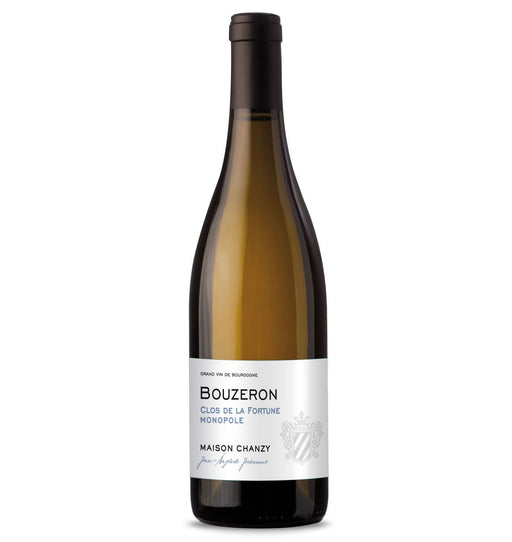Aligoté
Aligoté is most famous as the "third" grape variety of Burgundy, a poor cousin of the more prestigious (and more profitable) Chardonnay. DNA profiling has proven it to be a crossing of Pinot Noir and Gouais (a Gaulish grape variety) that no longer exists today. The variety is at its best in the wines of the regional Bourgogne Aligoté appellation, and particularly in Bouzeron, in the northern Côte Chalonnaise. Aligoté also has a key role in the sparkling Crémant de Bourgogne wines.
Aligoté has been a part of the Burgundian wine landscape for more than 200 years, planted alongside Chardonnay. It has now found its place in the less-rated sites, on the plateaus and in the valleys, away from the more expensive land reserved for Pinot Noir and Chardonnay. Aligoté is an early-ripening variety, and is more frost-resistant than its more renowned cousins, meaning that its presence in these cooler sites is ensured for some time to come. Just south of Burgundy, small amounts of Aligoté can be found in the Rhône Valley, mostly for blending with Chardonnay to create the light, fruity white wines of Chatillon-en-Diois.
When it comes to growing conditions, Aligoté is not as fussy as many other varieties. It is able to produce delicate wines when grown on the chalky soils of Burgundy, but will also thrive in sandier soils, such as those found in the Rhône. Perhaps counter-intuitively, this hardiness and reliability has only served to lower Aligoté's status to "useful" and "reliable" rather than "mysterious" and "enigmatic". Wine lovers and producers alike are naturally drawn towards challenging grape varieties like Pinot Noir and Nebbiolo – difficult to grow well, but more rewarding as a result.
Despite being best known as a French grape, Aligoté is grown in more significant quantities in other locations, notably in Eastern Europe. Many thousands of hectares are currently planted in countries like Bulgaria and Romania, where Aligoté wines have a surprisingly strong following. Plantings in these countries are many times bigger than in the variety’s traditional home in eastern France.
Wines produced from Aligoté are generally dry in style, with floral and herbal notes, naturally enhanced by the variety’s high levels of acidity. It is often used in blends, particularly those made in California for the U.S. market, where it can bring much-needed acidity and aroma to richer, less-structured wines.
There are a few mentions of an Aligoté Vert and even red Aligoté Rouge forms of the variety, but there is little data to suggest that these names are anything other than synonyms of other, unrelated grape varieties. The Aligoté grown in Bouzeron is said to be golden: when the grapes ripen in the sun, their skins, which are not as thick as those of the traditional Aligoté grown elsewhere in Burgundy, take on a golden hue and this allows a better alcohol/acidity balance during ripening.
Aligoté has been a part of the Burgundian wine landscape for more than 200 years, planted alongside Chardonnay. It has now found its place in the less-rated sites, on the plateaus and in the valleys, away from the more expensive land reserved for Pinot Noir and Chardonnay. Aligoté is an early-ripening variety, and is more frost-resistant than its more renowned cousins, meaning that its presence in these cooler sites is ensured for some time to come. Just south of Burgundy, small amounts of Aligoté can be found in the Rhône Valley, mostly for blending with Chardonnay to create the light, fruity white wines of Chatillon-en-Diois.
When it comes to growing conditions, Aligoté is not as fussy as many other varieties. It is able to produce delicate wines when grown on the chalky soils of Burgundy, but will also thrive in sandier soils, such as those found in the Rhône. Perhaps counter-intuitively, this hardiness and reliability has only served to lower Aligoté's status to "useful" and "reliable" rather than "mysterious" and "enigmatic". Wine lovers and producers alike are naturally drawn towards challenging grape varieties like Pinot Noir and Nebbiolo – difficult to grow well, but more rewarding as a result.
Despite being best known as a French grape, Aligoté is grown in more significant quantities in other locations, notably in Eastern Europe. Many thousands of hectares are currently planted in countries like Bulgaria and Romania, where Aligoté wines have a surprisingly strong following. Plantings in these countries are many times bigger than in the variety’s traditional home in eastern France.
Wines produced from Aligoté are generally dry in style, with floral and herbal notes, naturally enhanced by the variety’s high levels of acidity. It is often used in blends, particularly those made in California for the U.S. market, where it can bring much-needed acidity and aroma to richer, less-structured wines.
There are a few mentions of an Aligoté Vert and even red Aligoté Rouge forms of the variety, but there is little data to suggest that these names are anything other than synonyms of other, unrelated grape varieties. The Aligoté grown in Bouzeron is said to be golden: when the grapes ripen in the sun, their skins, which are not as thick as those of the traditional Aligoté grown elsewhere in Burgundy, take on a golden hue and this allows a better alcohol/acidity balance during ripening.
-
 Sold out
£19.10
Sold out
£19.10Maison Chanzy Bouzeron Clos De La Fortune Monopole 2012
Maison ChanzyMaison Chanzy Bouzeron Clos De La Fortune Monopole is a wine of a pale yellow colour with green reflections. Aromas of fresh, slightly acidic, citr...
View full details
Sort by

